Frank and Jane Clement Brick Museum - Table of Contents
Frank and Jane Clement Brick Museum
6291 Mile Strip Road, Orchard Park, NY
|
Visitors: Free viewing by appointment only |
Introduction - Museum brick collection
The Clement Brick Museum - the result of 40 years of collecting "branded' bricks - is a step back into history. Typical
categories of branded bricks include Native American, slave, prison,
common industrial and international bricks. Among the most prized
bricks in the collection are ones from the many local brickyards and
ones used in historic local buildings, including the Guaranty Building,
the Martin House, and the Larkin Soap Company.
As of April 2016, the
collection includes about 8,500 bricks on display in a double-length
garage and outdoor patio, not including the driveway bricks.
Jane
Clement is past president the International Brick Collectors Society;
Frank is the current vice-president of the organization that boasts
about 400 active members. They travel annually across the country to
trade and unearth bricks with historic value.
TEXT CONTINUED beneath Illustrations
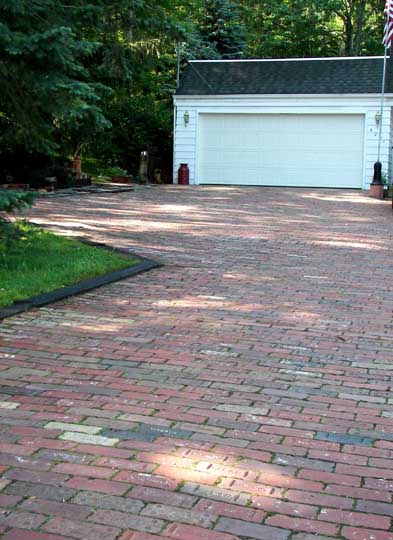
Driveway
12,000 "brand" bricks from across the country
Some bricks have been shellacked and color-highlighted
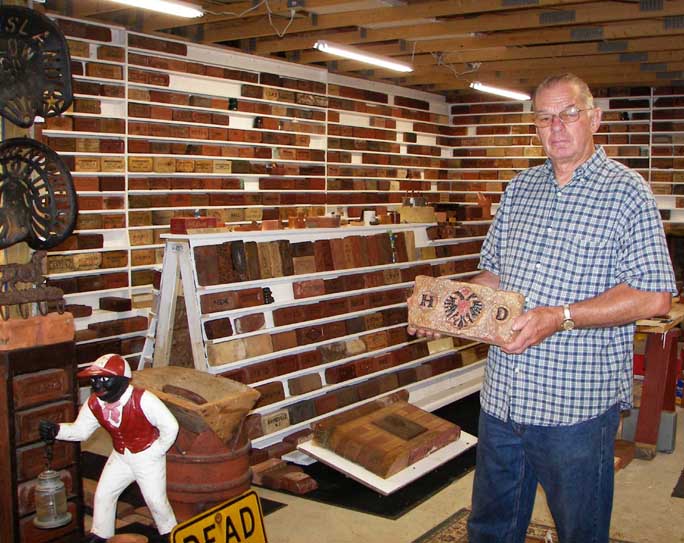
Inside the garage: Frank Clement holds one of the prized bricks
of the museum
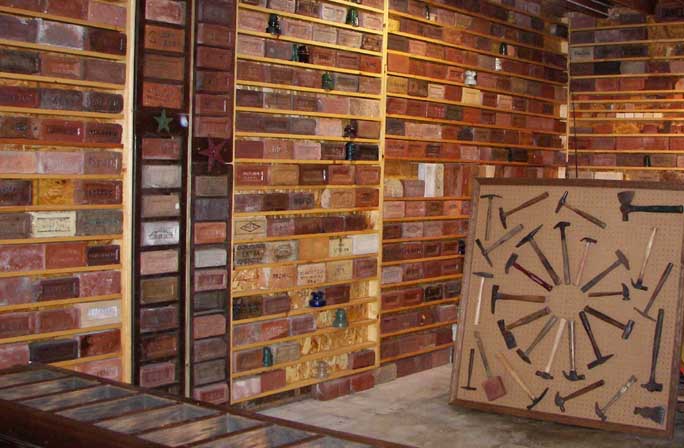
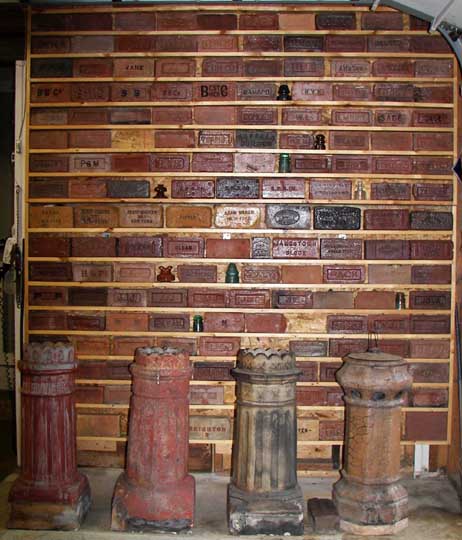
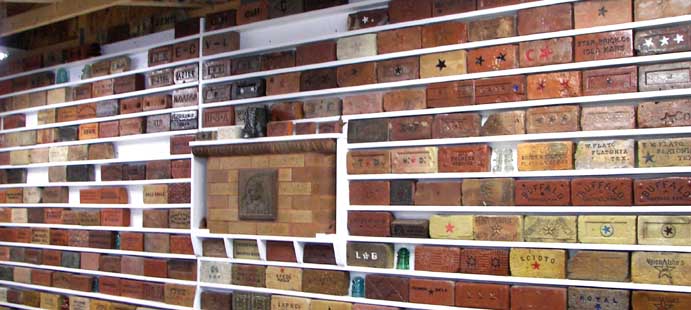
Another section of the museum
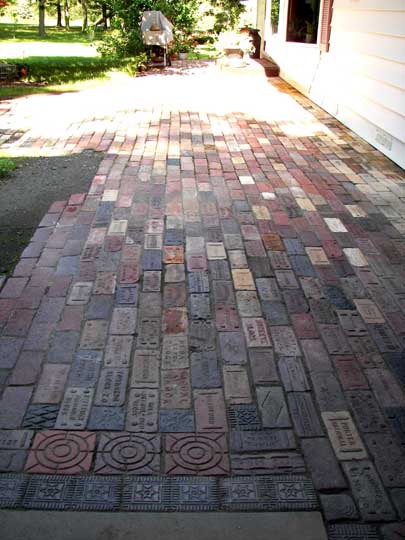
Backyard patio
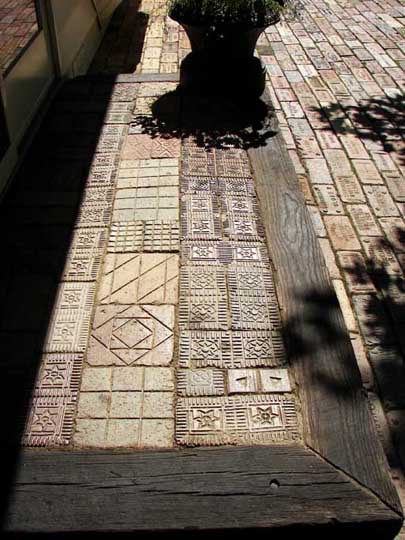
Backyard.
Note raised step framed by railroad ties.
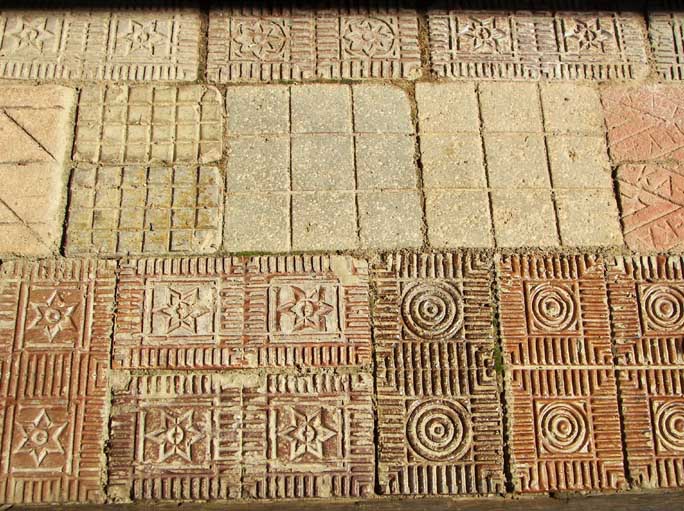
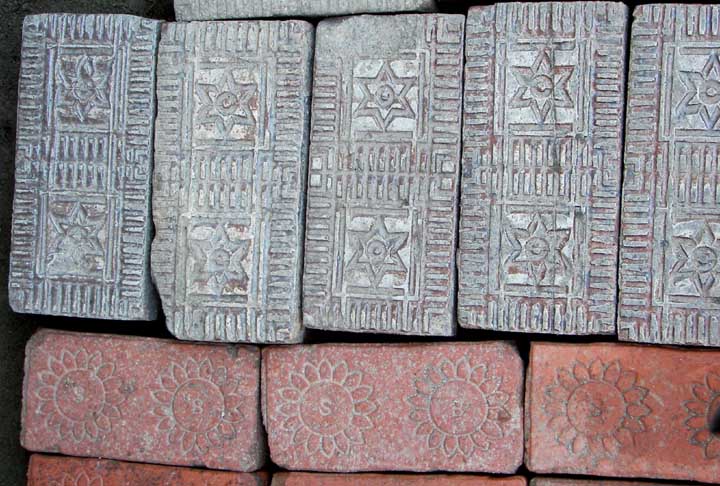
Frank and Jane Clement's home at 6291 Milestrip Road in Orchard Park has a driveway that, in 1995, featured 12,000 "brand" bricks from across the country.Brands are markings on a face of the brick, impressed or scraped into the wet clay before firing. Using brands began in the 1860s as a form of advertising. Not all bricks carry brands, According to Clement, only about 1 in 5,000 bricks will bear a brand. Only about a quarter of all buildings have what collectors consider "interesting bricks."
"Frogs": Early molds had no "frog," an indentation in the panel which in later years held the brand, so the brands were sometimes burned into the wood and sometimes cut with a knife.
The "frog," which dates at least to 1690 in England, was indeed important, for a number of reasons. This indentation on the bottom of the brick not only provided a place for the brand, it also saved material and provided a "key" for the mortar, insuring a better bond during bricklaying.
Very early brands were hand-drawn in the clay, and Clement notes that the literacy of laborers is sometimes evident in misspellings or reversed 'N's and 'S's. Later brands were mass-produced using wood or metal dies inserted in the brick molds; occasionally the screws holding the die to the backing panel of the mold also will be reproduced in the finished brick.
Kelly and Kelly characterize brand types in several categories:
- Family names of plant owners (Patton, Brush, etc.)
- Initials of company names, especially yards with multiple owners (DFjr&Co)
- Place names (Angola, Attica, Gallup, Alamo, etc.)
- Trade names or nicknames (Trojan, Keystone, etc.)
- Combinations of symbols or logo designs (e.g. letters within a crescent or oval)
There are other categories as well, including pure symbols and messages, Perhaps the most famous of the latter bricks are the "DON'T SPIT ON THE SIDEWALK" warnings emblazoned on bricks produced in Kansas as part of Dr. Samuel J. Crumbine's early 20th Century campaign to limit the spread of tuberculosis.
The National Building Museum in Washington, D.C. also has a research and display collection of bricks, including 1,500 donated in 1994 by Raymond Chase of Peekskill, NY. Included are bricks with the messages "Pray" and "Merry Christmas."
